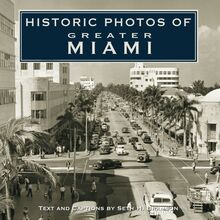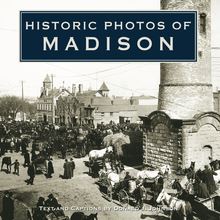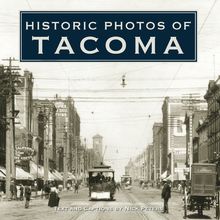Historic Photos of General George Patton , livre ebook
212
pages
English
Ebooks
2007
Vous pourrez modifier la taille du texte de cet ouvrage
Obtenez un accès à la bibliothèque pour le consulter en ligne En savoir plus
Découvre YouScribe en t'inscrivant gratuitement
Découvre YouScribe en t'inscrivant gratuitement
212
pages
English
Ebooks
2007
Vous pourrez modifier la taille du texte de cet ouvrage
Obtenez un accès à la bibliothèque pour le consulter en ligne En savoir plus
Publié par
Date de parution
01 octobre 2007
Nombre de lectures
0
EAN13
9781618586322
Langue
English
Poids de l'ouvrage
5 Mo
"To be a successful soldier you must know history. . . . What you must know is how man reacts. Weapons change but man who uses them changes not at all. To win battles you do not beat weapons—you beat the soul of man of the enemy man."
—General George S. Patton, Jr.
George S. Patton, Jr., born into an affluent California family in 1885, knew in early youth that his future lay in the military past of his ancestors. After graduating from West Point and placing 5th in the 1912 Olympics pentathlon, he became military aide to General Pershing during the Mexican Expedition, served as Tank Corps captain in World War I, and went on to lead Allied armies to stunning victories during the Second World War. Promoted to 4-star general by war's end, he was acknowledged our best general by America's vanquished enemies and acclaimed by Americans as a hero.
From his earliest days hunting and fishing in the California outback to his ironic death in an automobile accident at war's end in Germany, Historic Photos of General George Patton captures the greatest exploits of one of the nation's greatest combat generals. Patton's life in pictures blazes a trail sure to enthrall every reader, from the student of history to the history buff.
Publié par
Date de parution
01 octobre 2007
Nombre de lectures
0
EAN13
9781618586322
Langue
English
Poids de l'ouvrage
5 Mo
HISTORIC PHOTOS OF
GENERAL GEORGE PATTON
T EXT AND C APTIONS BY R USS R ODGERS
Patton addresses officers of the 82nd Airborne Division, Oujda, Morocco, June 4, 1943, in preparation for Operation Husky, the invasion of Sicily. It is ironic that some of Patton s antiaircraft units would shoot down some of the planes carrying 82nd Airborne men during the invasion, causing the loss of more than 200 dead and wounded. Prior to the jump, Patton had expressed concern that both Army and Navy antiaircraft gunners were too nervous and that the jump should be canceled.
HISTORIC PHOTOS OF
GENERAL GEORGE PATTON
Turner Publishing Company
200 4th Avenue North Suite 950
Nashville, Tennessee 37219
(615) 255-2665
412 Broadway P.O. Box 3101
Paducah, Kentucky 42002-3101
(270) 443-0121
www.turnerpublishing.com
Historic Photos of General George Patton
Copyright 2007 Turner Publishing Company
All rights reserved.
This book or any part thereof may not be reproduced or transmitted in any form or by any means, electronic or mechanical, including photocopying, recording, or by any information storage and retrieval system, without permission in writing from the publisher.
Library of Congress Control Number: 2007933763
ISBN-13: 978-1-59652-408-8
Printed in the United States of America
07 08 09 10 11 12 13 14-0 9 8 7 6 5 4 3 2 1
C ONTENTS
A CKNOWLEDGMENTS
P REFACE
T HE P REPARATION OF A S OLDIER (1885-1919)
B ETWEEN THE W ARS (1920-1941)
M ISSION I DENTIFIED : T HE S ECOND W ORLD W AR (1942-1943)
T HE R ISE OF AN I CON 1944-1945)
N OTES ON THE P HOTOGRAPHS
F OR F URTHER R EADING
An image that will endure: Patton doing one of the things he did best, delivering a fiery speech to stir up the troops prior to battle. It is indeed the best known and remembered aspect of Patton. This photograph was probably taken during the rain and sleet of mid December 1944.
A CKNOWLEDGMENTS
To Alina, wife and friend
and to my brothers in arms, past, present, and future. May our people be always grateful.
-------
This volume, Historic Photos of General George Patton , is the result of the cooperation and efforts of many individuals and organizations. It is with great thanks that we acknowledge the valuable contribution of the following for their generous support:
The Library of Congress
Patton Museum of Cavalry and Armor
Russ Rodgers Collection
P REFACE
Why another book on General George S. Patton, Jr.? Although scores of books have been written on the man who could be considered America s greatest combat general, there are few books that provide an extensive photographic look at his life. Moreover, while some of the photographs in this volume have been published before, few have been properly researched to identify the other people within, or some of the equipment shown. Talented though Patton was, he could not have accomplished what he did without the abilities and determination of the soldiers and officers who served with him during two world wars.
Patton s name will be indelibly imprinted on the U.S. Army s World War II legacy, especially his leadership of the Third Army during the Battle of the Bulge in December 1944. Patton s career, however, was far more extensive. He cut his military teeth on combat operations during the Mexican Punitive Expedition of 1916, followed by service with the new Tank Corps in World War I. He continued to serve faithfully through the interwar years when promotions were virtually at a standstill, and at one point contemplated leaving the army. It was a good thing he did not. During his service in World War II, Patton demonstrated that he was by far one of the most imaginative, determined, and flamboyant generals ever to serve in a modern army. During the drive across France he wrote his son, quoting Rudyard Kipling s poem If, that the entire art of war was to fill the unforgiving minute with sixty seconds worth of distance run (Martin Blumenson, The Patton Papers , vol. II [Boston: Houghton Mifflin Co., 1972], p. 523). It was with good reason that the German generals feared him far more than any other Allied general.
Though a profane soldier with his men, Patton was undeniably a deeply religious man as well. His diary is filled with entries about calling on God s help in times of distress, and thanking Him during times of success. This may appear to be contradictory to many today, but Patton seems to have experienced no tension here. The same can be said about the well-known slapping incidents during the Sicily campaign. Many are familiar with these events, largely from the movie Patton , but few know that Patton had tremendous sympathy and rapport with men wounded in combat. He himself nearly lost his life when wounded during World War I. Again, Patton saw nothing contradictory.
Often seen as blustering and threatening by the modern world, Patton was actually slow to act on impulse when it came to his officers and men. Indeed, generals like Eisenhower, Bradley, and Collins fired more of their commanders than Patton even contemplated, and when Bradley was determined to have a deserter shot, Patton tried personally to intervene, though unsuccessfully, to prevent it. He firmly believed that the physical discipline of soldiers was better than a military justice with far more serious consequences. It is now known that soldiers who served under him considered it one of the greatest honors of their lives. This has been rarely said about any other modern combat general.
Many disagree today with his methods and how he led men in battle. But one thing cannot be denied. When it was necessary to get sixty seconds from the unforgiving minute and to save the U.S. Army from impending disaster, its senior leaders invariably turned to one man, and that man was General George S. Patton, Jr.
Attending the Virginia Military Institute had become a Patton family tradition, and Patton is here seen in his official VMI portrait for 1904. He was then 18. But while VMI may have been a part of Patton lore, it was no longer the fast track to military glory. This had been transferred to the Military Academy at West Point.
T HE P REPARATION OF A S OLDIER
(1885-1919)
George S. Patton, Jr., was born November 11, 1885, to a well-to-do family in Southern California. Elite status was not always the case for the Pattons-the family had suffered near crushing poverty in post-Civil War Virginia. But once the family moved to California their fortunes changed. Georgie, as he was called by close family members, could have chosen to live the life of a well-to-do country gentleman. Instead, he singularly pursued the life of a professional soldier. Though raised with the wealth gained through family ties, Patton grew up on the tales of soldierly virtue. His grandfather had served, and died, for the South in the Civil War, and Patton readily compared him to the great warrior legends of the past. His passion for being a soldier most certainly drove the rest of his boyhood activities. He spent many summers swimming, sailing, fishing, and hunting on Catalina Island, yet he did these activities mostly as a loner. Of all the photographs we have of his boyhood, Patton is never seen with other boys. This penchant for being alone followed him through West Point, where he never built any close friendships. It was only later in life that he cultivated a few close friendships with fellow officers.
His focus on a military career almost kept him from marrying Beatrice Ayer, and he had to write lengthy letters to the girl s father to explain why he had chosen his particular career path. Beatrice had also grown up in wealth and privilege, and her father was naturally concerned for her future well-being. Once married, their first posting at Fort Sheridan, Illinois, became a severe trial for Beatrice, but she stayed devoted and committed to George, always working to promote his career. Military life was very difficult in the pre-war Army of 1910, but family money helped ease the Pattons circumstances. Unable to find a war to fight in, Patton decided to compete in the 1912 Olympics, making a credible showing for one who had received little preparation for the games. But it was in World War I, then called the Great War, where Patton finally found his outlet for the one thing he desired most-military glory.
Colonel George S. Patton, Confederate States of America (CSA), 1833-1864, was George S. Patton, Jr. s grandfather. He was devoutly religious, chivalrous toward women, a smart dresser, and a graduate of the Virginia Military Institute, class of 1852. He died from wounds he received at the Third Battle of Winchester, September 25, 1864, in Virginia s Shenandoah Valley. He provided a perfect role model for his grandson s preparations for a military career.
Don Benito Benjamin Wade Davis was one of the wealthiest men in Southern California in the late 1800s. He had not started out so, having been an adventurer himself in his younger years. His daughter, Ruth Wilson, would be courted by the young George S. Patton, Sr., and they would marry in 1884. Their marriage was considered the high-society event of the era by the local media.
Patton s father, George Smith Patton, Sr. After graduating from the Virginia Military Institute in 1877, he moved back to California where his oratorical skills and abilities in law and politics led him to be a vocal supporter of Grover Cleveland s candidacy for President. He originally wanted to pursue a life of adventure, and had even accepted a commission with the Egyptian pasha to accompany his army led by British general William Hicks. However, he was never able to get to Egypt, which was fortuitous since Hicks command was virtually wiped out during the Mahdi uprising in the Sudan.
Even in infancy, one can distinguish the familiar features of the man who would someday be one of America s greatest generals.
George S. Patton, Jr., aged seven in a sailor suit. The suit became more than costume














